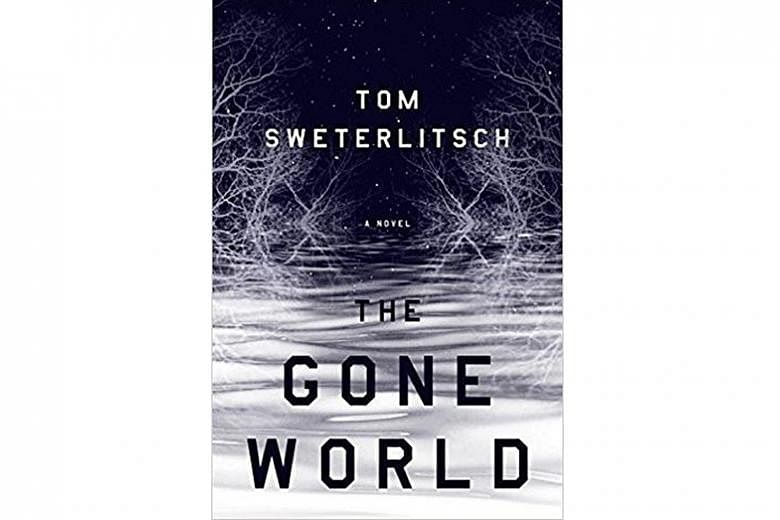FICTION
THE GONE WORLD
By Tom Sweterlitsch
Headline Publishing Group / Paperback/304 pages/ $30.98/Books Kinokuniya
3.5 stars
Time travel remains a perennial favourite for science-fiction writers and Tom Sweterlitsch, whose second novel, The Gone World, brings the concept into the depths of a murder mystery to produce a satisfyingly page-turning pulp read.
Naval Criminal Investigative Service agent Shannon Moss belongs to a secret branch of the service which investigates crimes through time travel. In 1997, she is tasked with solving the murder of a Navy Seal's family and to find his missing daughter.
When leads in her own timeline run cold, Moss jumps forward to 2015, creating a future timeline in which the case has been closed, so that she can return to her original timeline with the foreknowledge of what happened in order to solve the case there.
This murder case is but one of the many webs Sweterlitsch weaves in his ambitious novel. Right from the get-go, he drops hints of an "endless forest" and an apocalyptic end of the world called the Terminus, which sets the backdrop for a sinister, overarching plot that goes beyond a simple murder mystery.
The Gone World is a gripping, cinematic novel with overtones of Lovecraftian apocalypse, along with a strong sense of the supernatural which will be familiar to fans of the television series True Detective.
The shadow of the Terminus that hangs over the novel is infused with references to Norse mythology such as Naglfar, a ship made of the fingernails and toenails of the dead, which makes a grisly appearance in the novel.
Sweterlitsch's strength lies in taking hard sci-fi concepts, such as loops created by time travel and the end of the world through a black hole, and making them simple, effective plot points that drive the action forward without being too bogged down by the science.
However, he does seem to enjoy coming up with his own terms and names - such as IFTs, or "inadmissible future trajectories"- that he unsubtly introduces to the reader through clunky exposition and an overdose of science-related jargon.
The novel is well-paced, with Sweterlitsch slowly adding new dimensions - and complications - to time travel once readers are comfortable with existing ones.
Every time Moss jumps forward to the future, she creates a new timeline that ceases to exist when she returns to her own time of origin, raising existential questions of the nature of reality for both characters and readers.
Once readers get used to this idea of temporary, alternative timelines, Sweterlitsch ups the ante by introducing "echos" - people who exist in future timelines brought back to the time traveller's original timeline. These keep readers guessing who's who until the eventual reveal.
If you like this, read: John Dies At The End by David Wong (Titan Books, 2011, $16.80, Books Kinokuniya), a darkly comic horror novel which also explores time travel, body doubles, parallel universes and the end of the world.


